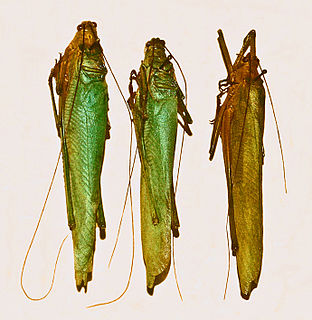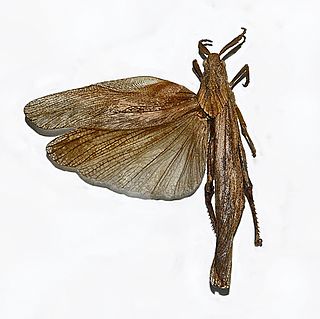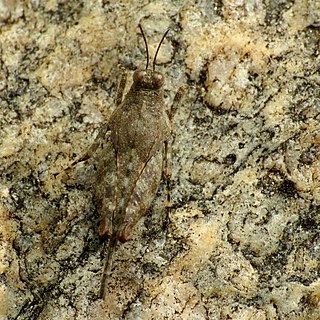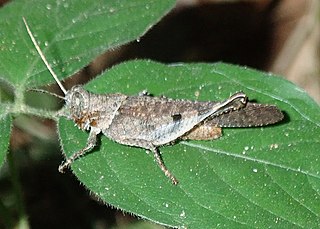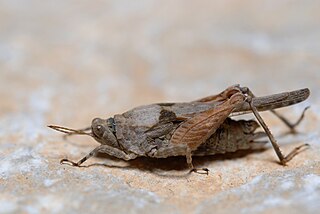| Paratettix curtipennis | |
|---|---|
| Scientific classification | |
| Kingdom: | Animalia |
| Phylum: | Arthropoda |
| Class: | Insecta |
| Order: | Orthoptera |
| Suborder: | Caelifera |
| Family: | Tetrigidae |
| Genus: | Paratettix |
| Species: | P. curtipennis |
| Binomial name | |
| Paratettix curtipennis (Hancock JL, 1912) | |
| Synonyms | |
Paratettix curtipennis [2] [3] is a species of groundhopper which belongs to the subfamily Tetriginae and tribe Tetrigini. Its distribution includes: India (type locality [4] ), southern China, [5] including Tawan, [6] Indo-China and peninsular Malaysia; [7] no subspecies are listed in the Catalogue of Life [8] or the Orthoptera Species File. [9]

Tetrigidae is an ancient family in the order Orthoptera, which also includes similar families such as crickets, grasshoppers, and their allies. Species within the Tetrigidae are variously called groundhoppers, pygmy grasshoppers, pygmy devils or "grouse locusts".

Tetriginae is a large subfamily of groundhoppers or pygmy grasshoppers. Members of Tetriginae occur on every continent except Antarctica.

The Catalogue of Life is an online database that provides the world's most comprehensive and authoritative index of known species of animals, plants, fungi and micro-organisms. It was created in 2001 as a partnership between the global Species 2000 and the American Integrated Taxonomic Information System. The Catalogue interface is available in twelve languages and is used by research scientists, citizen scientists, educators, and policy makers. The Catalogue is also used by the Biodiversity Heritage Library, the Barcode of Life Data System, Encyclopedia of Life, and the Global Biodiversity Information Facility. The Catalogue currently compiles data from 168 peer-reviewed taxonomic databases, that are maintained by specialist institutions around the world. As of 2019, the Catalogue lists 1,837,565 of the world's 2.2m extant species known to taxonomists on the planet at present time.



